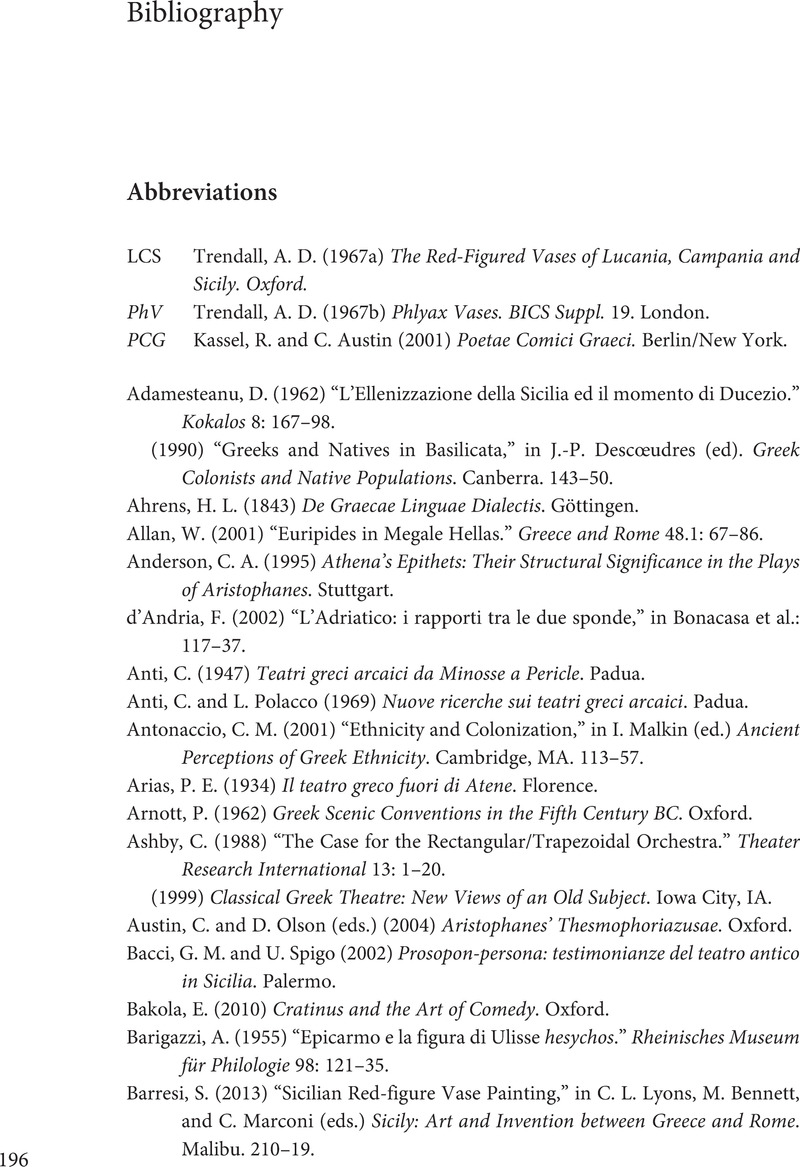Book contents
- Greek Theater in Ancient Sicily
- Greek Theater in Ancient Sicily
- Copyright page
- Contents
- Figures
- Maps
- Tables
- Foreword
- Note to the Reader
- 1 Introduction
- 2 Out of the Shadows
- 3 Cult and Circumstance
- 4 Politics and Propaganda
- 5 Taking Theater Home
- 6 Drama in Public
- 7 Conclusion
- Bibliography
- Index locorum
- General Index
- References
Bibliography
Published online by Cambridge University Press: 11 February 2021
- Greek Theater in Ancient Sicily
- Greek Theater in Ancient Sicily
- Copyright page
- Contents
- Figures
- Maps
- Tables
- Foreword
- Note to the Reader
- 1 Introduction
- 2 Out of the Shadows
- 3 Cult and Circumstance
- 4 Politics and Propaganda
- 5 Taking Theater Home
- 6 Drama in Public
- 7 Conclusion
- Bibliography
- Index locorum
- General Index
- References
Summary

- Type
- Chapter
- Information
- Greek Theater in Ancient Sicily , pp. 196 - 217Publisher: Cambridge University PressPrint publication year: 2021



